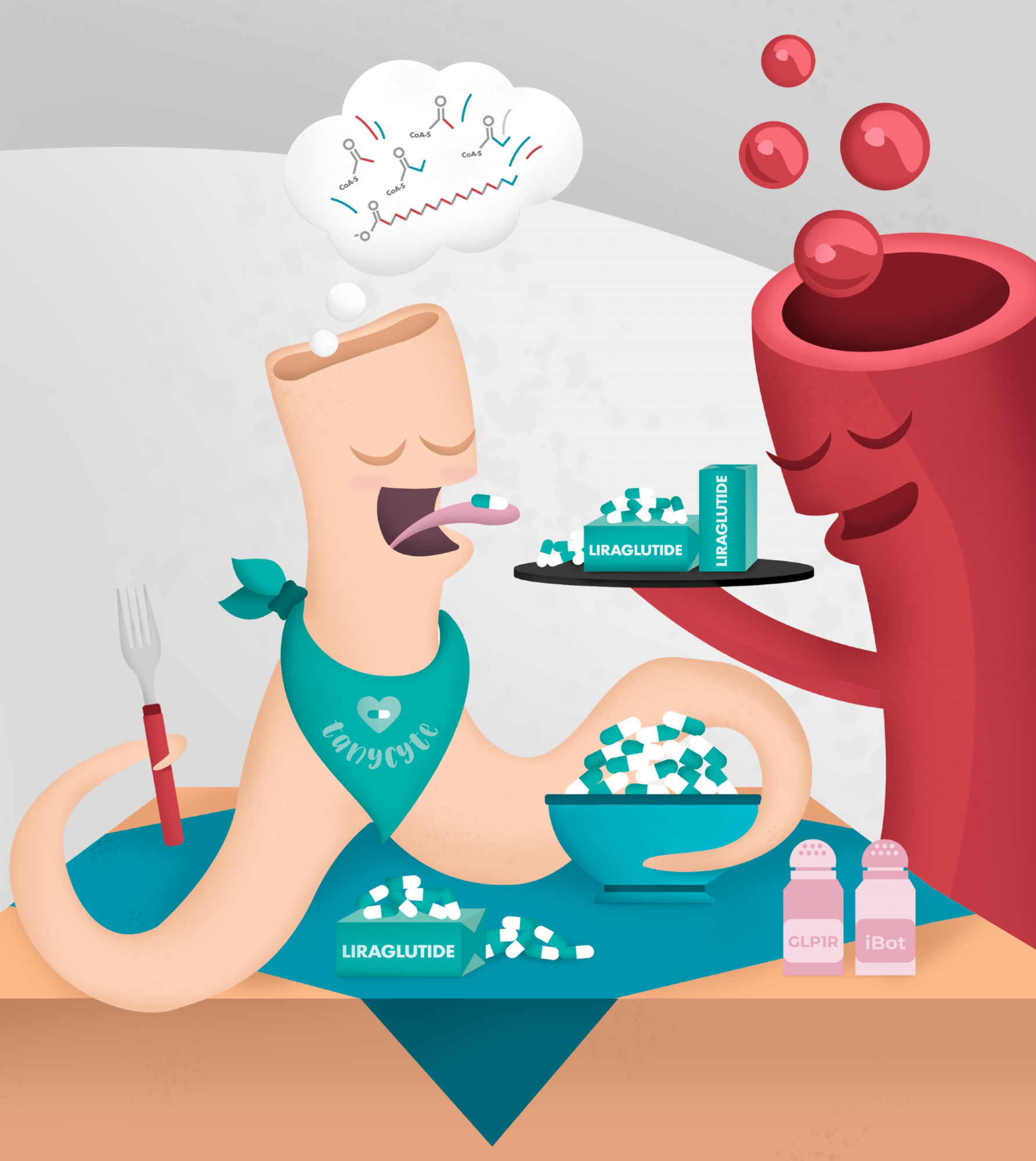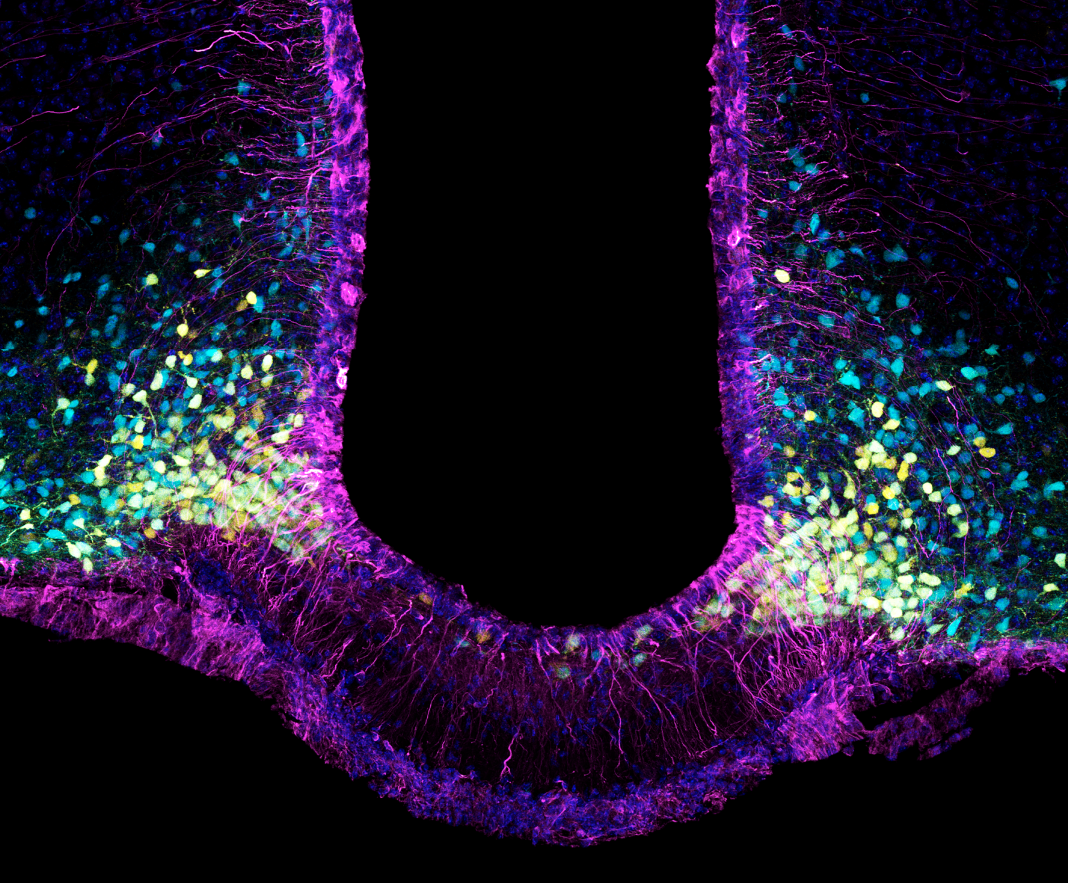The WATCH project aims to elucidate how tanycytes mediate physiological processes by acting as gatekeepers between the brain and body, how their dysfunction is involved in various disorders and age-related impairments, and what can be done to prevent or correct these
In our aging societies, maintaining health and limiting age-related metabolic or cognitive disorders are of primordial importance not only for the well-being of the individual but also from the economic and societal points of view. The Synergy project Well-Aging and the Tanycytic Control of Health (WATCH), funded by the European Research Council (ERC), is a high-impact project conducted by Vincent Prévot, a neuroendocrinologist working for the French national health research institute (Inserm), in Lille, France; Markus Schwaninger, a neurologist at the University of Lübeck, Germany; and Ruben Nogueiras, an expert in molecular metabolism at the University of Santiago de Compostela in Spain. Together, these three teams aim to understand how a small and highly specialized population of brain cells called tanycytes regulate a variety of physiological processes, and the implications of their function or dysfunction for healthy aging.
Gatekeepers between brain and body
The survival of an organism depends on the accurate and timely exchange of information between neurons of the brain that control various bodily process and the peripheral organs where these processes take place. However, the brain is a delicate organ that is protected from changes in the rest of the body by a “blood-brain barrier” (BBB) composed of blood vessels, whose tightly sealed walls prevent the free passage of most big molecules, such as toxins or pathogens, but also useful signals such as hormones and metabolites, into the brain. In a small part of the brain called the hypothalamus, some blood vessels are “fenestrated” or porous. Instead, the hypothalamus sports a different barrier consisting of a peculiar type of brain cells called tanycytes, which form a bridge between the blood and a system of brain canals filled with cerebrospinal fluid, known as ventricles. Tanycytes constitute both a physical barrier, preventing the free diffusion of molecules from the blood into other parts of the brain, and an active shuttling system that allows certain blood-borne signals to access their target neurons. In the reverse direction, they also undergo dynamic remodeling to control the secretion of some hormones by the brain into the blood. In other words, tanycytes are the “gatekeepers” of the neuroendocrine brain.

The maintenance of equilibrium
In order to continue to function despite internal and external changes, the body must maintain homeostasis or equilibrium. Among the processes controlled by tanycytes is energy homeostasis, i.e., the matching of energy output to fuel bodily functions with energy input in the form of food intake. When this equilibrium is lost, metabolic diseases such as type-2 diabetes, obesity or anorexia result. In addition, neurodegenerative disorders such as Alzheimer’s Disease, which are accompanied by the accumulation of pathogenic molecules in the brain with age, are also characterized by a breakdown of brain-body communication. Understanding how this communication takes place is therefore essential to dealing with both metabolic disorders and neurodegenerative diseases, whose prevalence is dramatically increasing throughout the world. This is where tanycytes play a crucial role, as they are capable of sensing many of the signals and products that need to cross over from one compartment to the other. However, how various types of tanycytes differ from each other, how they interact with each other and with other cell types, and how they modulate physiological conditions or are themselves modulated under pathological ones, are all questions that remain to be elucidated.
The WATCH project
WATCH aims to answer these questions and to develop treatments for disorders where the exchange of information between the brain and the periphery breaks down over time.
Over the past 3 years, the WATCH consortium has made a number of groundbreaking discoveries, for which it has been named an “ERC Success Story”. To give a very few examples:
(a) The breakdown of tanycytic transport of the satiety hormone leptin into the hypothalamus leads not only to obesity but to diabetes, by interfering with pancreatic function (doi: 10.1038/s42255-021- 00432-5). Similarly, anti-obesity drugs such as Liraglutide reach their brain target through tanycytes (doi: 10.1016/j.cmet.2022.06.002).
(b) Hypothalamic POMC neurons that limit food intake do not themselves sense glucose from the blood, which indicates whether an individual has eaten or not. Instead, tanycytes close to these neurons form a network that “translates” glucose into another fuel, lactate, which they feed to the neurons (doi: 10.1172/JCI140521).
(c) Tanycytes also mediate anorexia or cachexia, i.e. “wasting”, and weight- loss in patients with certain diseases, by means of a molecule involved in inflammation, NFxB (doi:10.1016/j.molmet.2020.101022).
(d) Prolonged breastfeeding protects offspring against obesity through a metabolic mechanism involving the tanycytic transport of a hepatic molecule, FGF21, into the hypothalamus (doi: 10.1038/s42255- 022-00602-z).
(e) Tanycytes shuttle the protein Tau, whose accumulation in the brain is implicated in Alzheimer’s disease pathogenesis, out of the brain, and appear to be severely degraded in Alzheimer’s disease patients (doi:https://doi.org/10.1101/2022.05.04.22274181). This is of particular interest as the Prevot team, in a recent Science paper (doi:10.1126/science.abq4515), has implicated the progressive loss of the hypothalamic reproductive hormone gonadotropin-releasing hormone (GnRH), whose secretion is controlled by tanycytes, in cognitive decline in Down syndrome and possibly Alzheimer disease.
All these findings support the view that tanycytes are involved in the pathophysiology of both metabolic disorders and certain forms of cognitive impairment, and could be good therapeutic targets.



